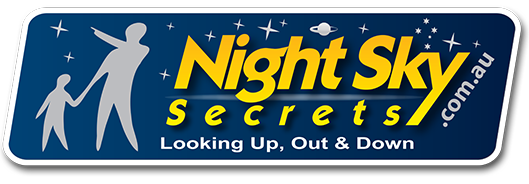Winter Skies July- Aug 22
Well, we are well into July and as is usual I do this update when I can, this time adding the finishing touches on the return Flight from Mt Isa (again).

Meteor Showers
The past few months have seen the absence of any Meteor showers of note. However, the end of July sees the return of 2 very reliable annual Meteor Showers, the plentiful southern delta Aquarids, and the more sparse but often spectacular Capricornids. The Aquarids are medium-speed meteors of up to 25 per hr while the Capricornids may only give us 5 per hr, they are slow moving and often seen as fireballs!
Both showers peak on the evenings of the 30/31st of July around mid-evening onwards.
In August we have the Perseids in the Morning sky peaking on the 12th, unfortunately coinciding with the Full moon. For those of us in Northern Australia perhaps a few days prior, an early morning Moonset will be better!
The Planets
Saturn is the first of the giant planets to make a return to our evening skies, now becoming visible mid-evening as it heads towards conjunction mid-August. For the dedicated Saturnophile start to observe Saturn 2 weeks prior to the opposition and you may notice the “Seelinger” effect, where the rings will be 1.7 times brighter at opposition than prior to it!
Jupiter has also returned to our evening skies as well, rising around 10 pm in mid-July. In August it’s a fine sight as it rises with the waning moon on the 15th.
Mars is starting to become worthwhile to view as it has doubled in size from the start of the year. A great time to look will be on the 31st of July when it has a close encounter with Uranus at just 2 Deg apart, though still in the morning sky.
Mercury returns to the evening sky in August and it’s at its best and highest on the 28th. But even before that, it has an interesting close apparition with the bright star Regulus in Leo on the 4th. Look for Mercury to appear as the sunset light fades in the west.
Venus continues to be bright in the July morning sky before dipping closer to the Horizon in August.
Comet Viewing
Comet Panstarrs C/2017 K2 continues brightening (magnitude 8) in the constellation of Ophiuchus (the serpent bearer). Right now in early July, it is close to the clusters M10 & M12 & it will remain in Ophiuchus until the end of July before moving into Scorpius in August.
The Constellations
Scorpius & Sagittarius dominate the winter evening sky & you could spend a whole night observing there. However, your 1st point of attention should be the southern sky with Crux & the Carina region boasting some spectacular Nebula and star clusters as they now turn to the west. Still, it’s not too late to get a look at the Virgo/Leo Galaxies before they slip away into the solar glare.
Telescopes are finally getting easier to come by in all but the larger Go-to and bigger Dobs. A very special new range of scopes are the Celestron Starsense 8 & 10” Dobsonians coming in-store, very soon!
As always we love to hear from you to help you with your astronomy needs.
